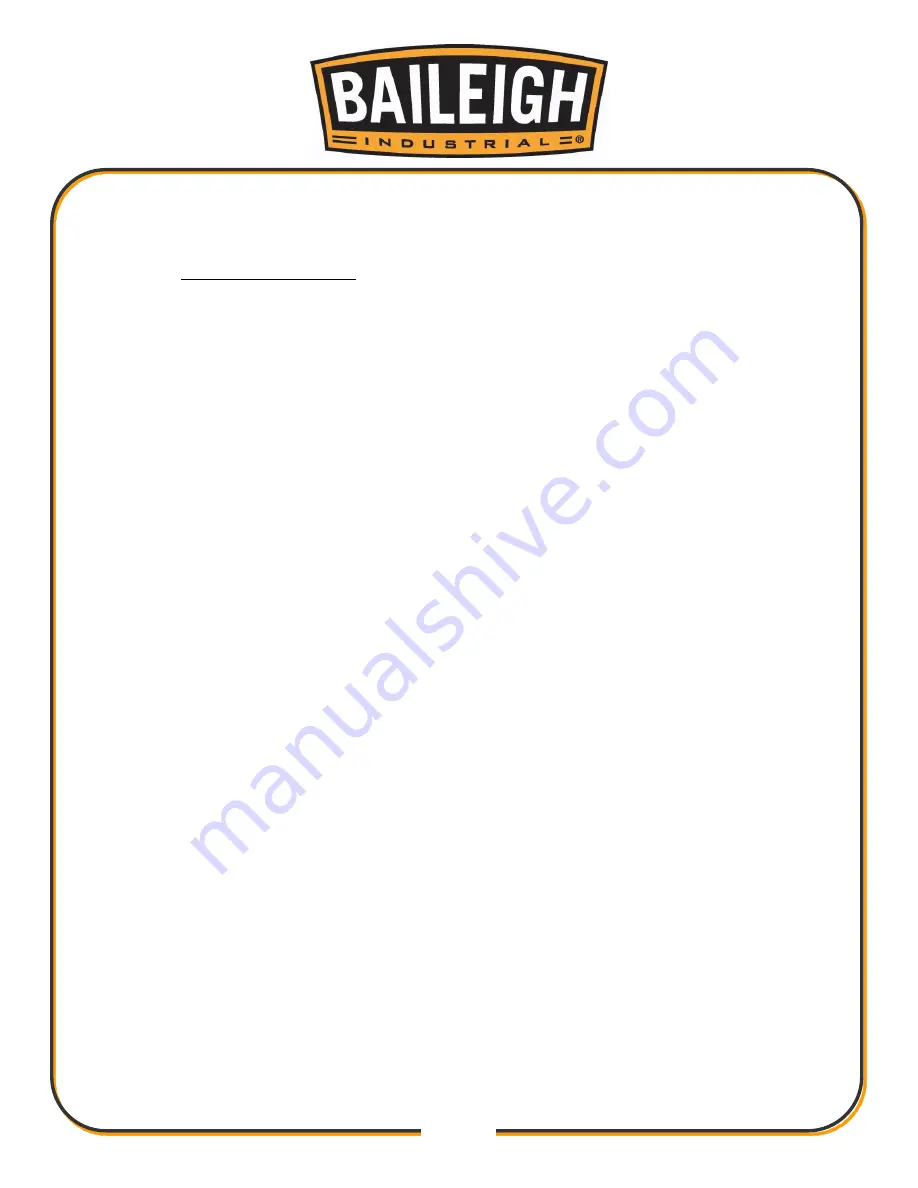
8
8
22. Be sure
all
equipment is properly installed and grounded according to national, state, and
local codes.
23. Inspect power and control cables periodically. Replace if damaged or bare wires are
exposed.
Bare wiring can kill! DO NOT
touch live electrical components or parts.
24.
DO NOT
bypass or defeat any safety interlock systems.
25.
Reduce the risk of unintentional starting
. Make sure switch is in
“OFF”
position before
plugging in power cord.
26.
Never leave machine running unattended. TURN POWER OFF
. Don’t leave machine until
it comes to a complete stop.
27.
Minimum Stock Dimensions
.
DO NOT
sand material thinner than 1/16” (1.5mm), narrower
than 1/8” (3mm), or shorter than 8” (203mm).
28.
Changing Sanding Belt. DO NOT
operate the sander if the belt is damaged or badly worn.
Replace at once.
29.
Inspect Piece Part.
Always inspect piece part for imperfections that could become
projectiles causing personal injury.
30.
Correctly Feeding the Stock.
Grasp the piece part firmly with both hands and ease into the
belt with light pressure.
NEVER
force the piece part into the belt.
DO NOT
sand tapered or
pointed stock with the point facing into the feed direction of the belt.
NEVER
sand more than
one piece of material at a time.
31.
Warning
: The dust generated by certain materials can be injurious to your health. Always
operate machinery in well ventilated areas and provide for proper dust removal. Use a dust
collection system whenever possible.
32.
Use spark and debris arresting apparatus
. Such apparatus should be connected to the
machine so as to contain dust and debris that is generated, and to suppress sparks thereby
limiting human inhalation risk, and the risk of fire or explosion.
33.
Protect persons from work pieces, particulates, etc.
that could be forcibly ejected from
the machine. A buffing wheel or grinding belt can "grab" a work piece while the work piece is
being buffed, polished, ground, or otherwise conditioned, resulting in forcible ejection toward
the operator or those in the vicinity of the machine. The use of leather aprons, gloves, and
eye shields are examples of protective gear that may be effective. In general do not grind,
buff, or otherwise engage the traveling belt, wheel, or disc surface with the work piece
pointing into the direction from which the belt, wheel, or disc is traveling. However, if you
choose to do so be aware the work piece may lodge in the traveling belt, wheel, or disc and
be forcibly and dangerously ejected.
34.
Do not
operate this machine if the gap (nip point) between a moving belt, wheel or disc and
the work support surface exceeds 1/8” (3mm).
Summary of Contents for BG-260-3-110
Page 25: ...23 23 PARTS DIAGRAM...
Page 29: ...27 27 NOTES...
Page 30: ...28 28 NOTES...
Page 31: ...29 29 NOTES...











































